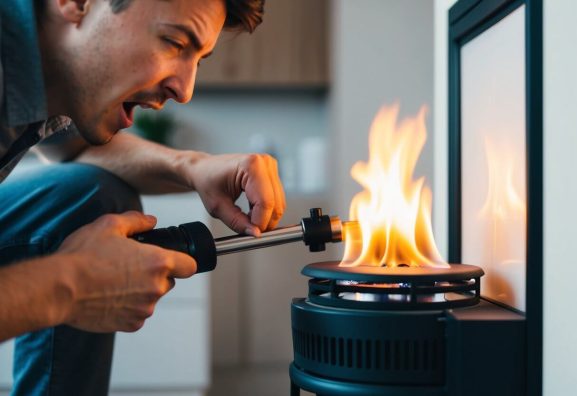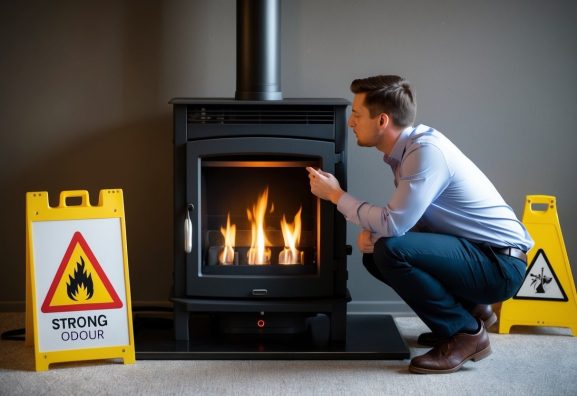Are Gas Fireplace Inserts Safe? Safety & Common Myths
When considering upgrades for a home’s heating system, the question of whether gas fireplace inserts are safe often arises. These modern marvels promise the cozy flames of a traditional fireplace with added convenience and efficiency. Gas fireplace inserts are generally safe when used correctly, equipped with safety features to minimize risks. Yet, understanding their operation and keeping informed about potential hazards is crucial for maintaining a secure environment.
Gas fireplace inserts have become popular due to their efficiency and cleanliness compared to traditional wood-burning fireplaces. Ventless inserts, in particular, boast high efficiency ratings but draw attention due to exhaust fumes that stay indoors. It’s essential for homeowners to assess the type of insert that best fits their needs and ensures a healthy indoor atmosphere.
Proper installation and maintenance are critical components of ensuring safety with gas fireplace inserts. Regular checks and adherence to safety protocols help prevent mishaps, such as carbon monoxide leaks. As the article unfolds, it will delve into the various features, considerations, and maintenance tips that will help maintain both warmth and safety in the home.
Key Takeaways
- Gas fireplace inserts offer safe heating with proper use.
- Ventless inserts provide efficiency but impact indoor air quality.
- Regular maintenance ensures safe and efficient performance.
Types and Mechanisms of Gas Fireplace Inserts
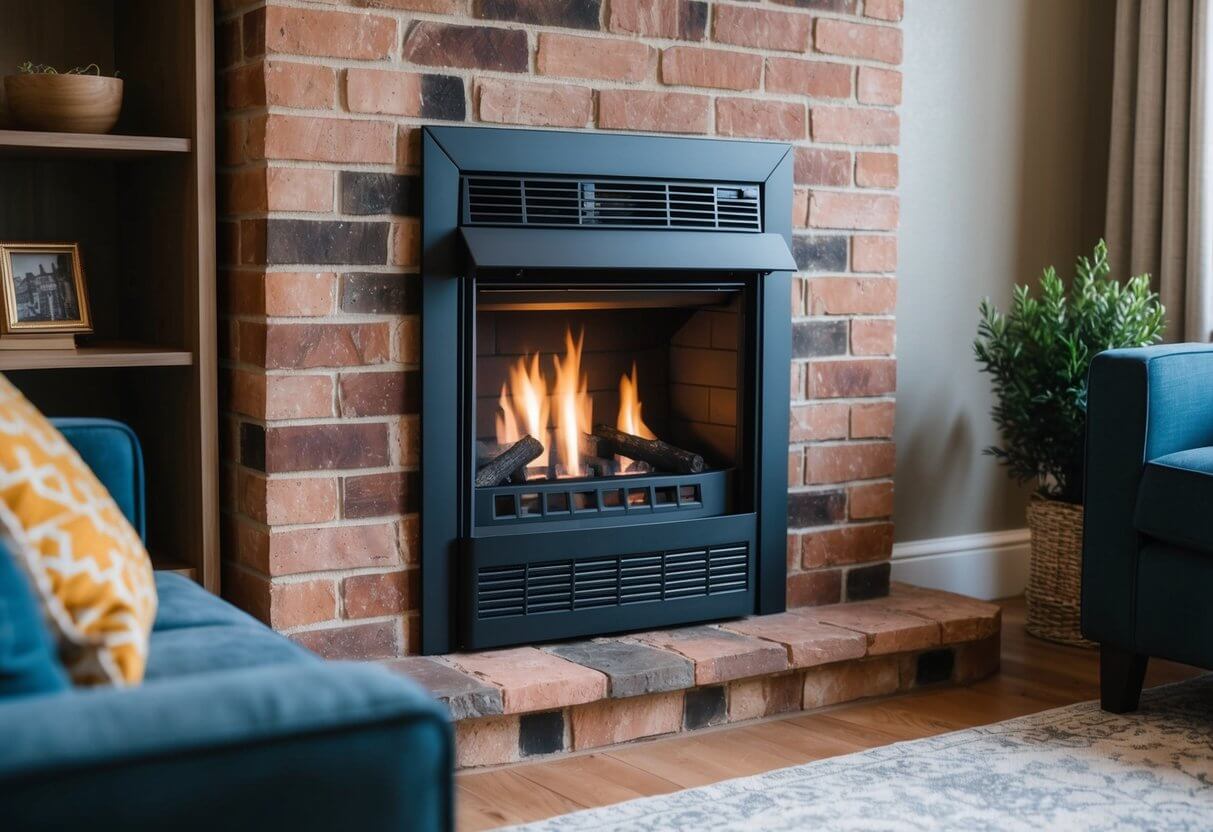
Gas fireplace inserts are versatile systems designed to fit into an existing fireplace, offering enhanced efficiency and convenience. They come in various types, primarily identified by their venting systems and fuel options, each providing unique advantages.
Direct Vent vs. Ventless Systems
Direct vent inserts use a sealed combustion system, drawing air from outside the home for combustion and exhausting gases directly outside. This prevents indoor air contamination and improves safety. They are highly efficient as they retain a significant amount of heat inside the room.
Ventless systems, on the other hand, do not require a flue or vent. They emit combustion products into the room, which necessitates proper room ventilation to ensure safety. While they are simple to install and often more economical, their use can be restricted in certain areas due to safety concerns.
Natural Gas and Propane Options
Gas fireplace inserts can operate using either natural gas or propane. Natural gas is often preferred for urban settings due to its continuous supply via utility lines, eliminating the need for storage tanks. It’s typically less expensive compared to propane.
Propane, conversely, is stored in tanks and is commonly used in rural or off-grid locations. It provides a high energy output, making it efficient for heating. When choosing between these options, availability, cost, and installation flexibility are key considerations.
Safety Features and Considerations
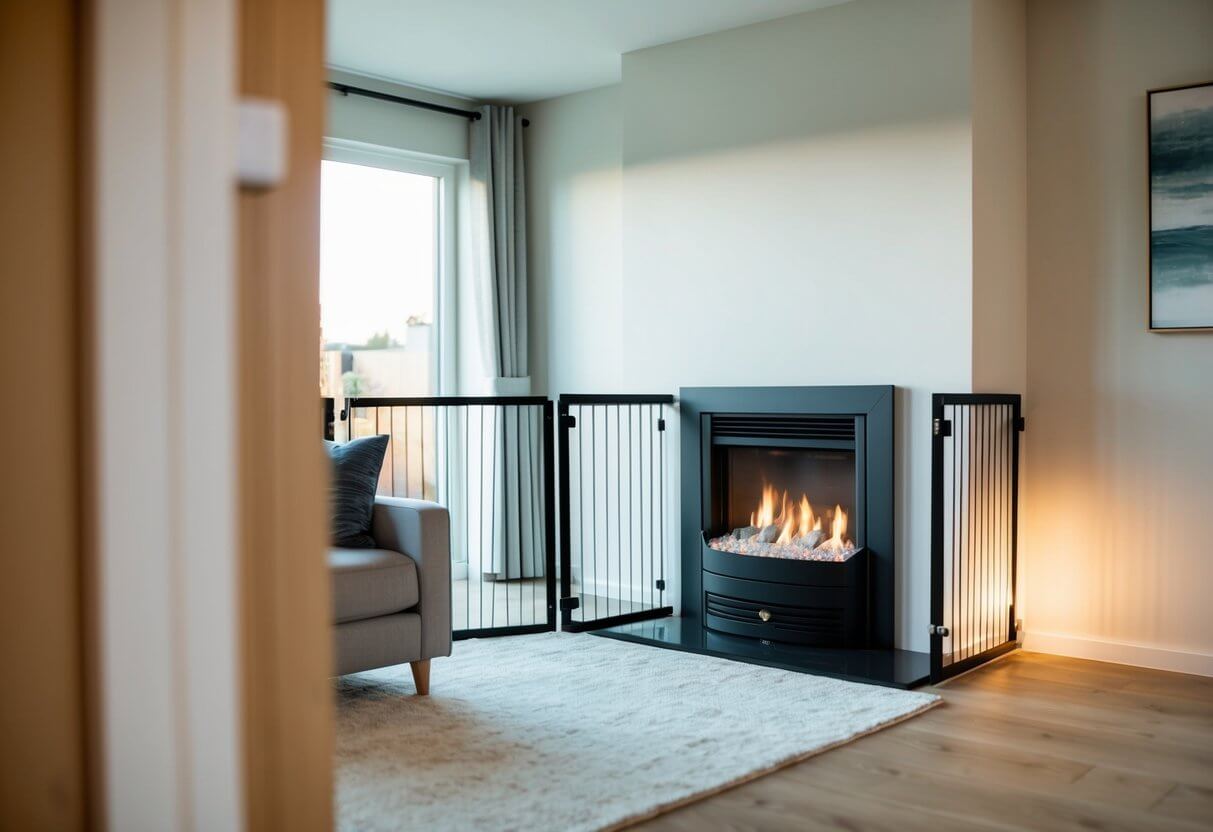
Gas fireplace inserts incorporate important safety features to protect users from potential hazards. Significant considerations include the functionality of oxygen depletion sensors and carbon monoxide detectors. These devices are vital in safeguarding indoor air quality and user safety.
Oxygen Depletion Sensors
Oxygen Depletion Sensors (ODS) are crucial safety components in gas fireplace inserts. They monitor oxygen levels in the environment, ensuring there’s enough airflow for safe operation.
When oxygen levels drop too low, the ODS automatically shuts off the gas supply. This prevents dangerous situations caused by inadequate ventilation. An oxygen-deficient environment can lead to carbon monoxide buildup, making ODS a vital part of any gas fireplace system.
Ideal for sealed combustion systems, these sensors help maintain combustion efficiency and enhance the overall safety of fireplaces. They are particularly useful in settings where natural ventilation may be limited, ensuring the fireplace operates within safe parameters.
Carbon Monoxide Detectors
Carbon Monoxide Detectors play a vital role in fireplace safety by detecting harmful gas levels. Carbon monoxide is a colorless, odorless gas that can pose significant health risks.
These detectors are designed to alert users when unsafe levels are present, allowing for immediate action. Efficient gas fireplaces should integrate carbon monoxide detectors as part of their safety mechanisms.
Placement of detectors is key for optimal function. They should be installed near the fireplace insert and other strategic points in the home. The Environmental Protection Agency advocates for their use to prevent carbon monoxide poisoning, underscoring their importance in indoor safety measures.
Installation and Maintenance
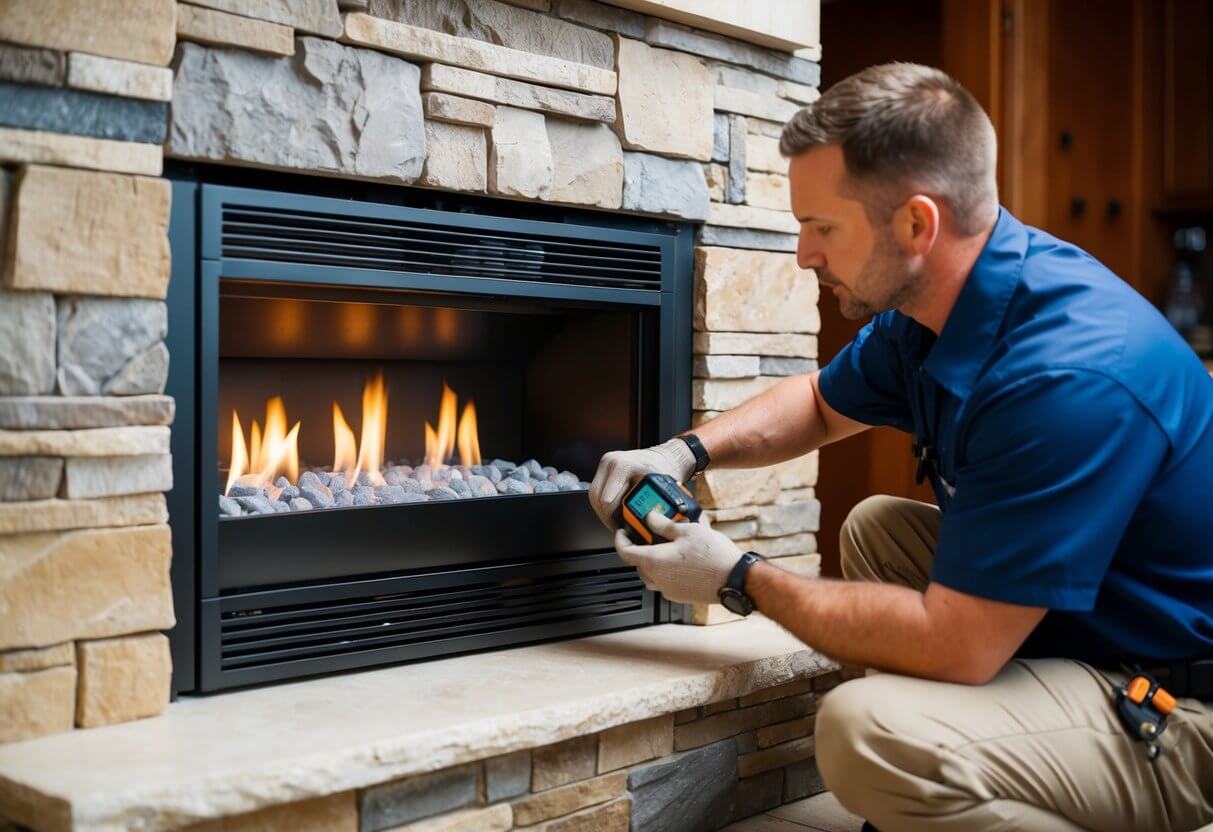
Proper installation and ongoing maintenance are crucial for ensuring the safety and functionality of gas fireplace inserts. These steps can help enhance efficiency and provide peace of mind.
Professional Installation
Gas fireplace inserts should be installed by certified professionals. Choosing the right expert ensures adherence to local building codes and regulations. They handle the complexities of connecting gas lines and venting systems.
Proper installation includes securely sealing vents and chimneys to prevent leaks. Misalignment or improper sealing may lead to dangerous gas leaks or inefficient operation. Qualified professionals will conduct initial safety checks and verify that all components function as designed.
Regular Maintenance and Inspections
Routine maintenance is essential to maintain fireplace safety and efficiency. Homeowners should schedule annual inspections by certified technicians. During these inspections, valves, ignitions, and ports should be cleaned and tested.
Cleaning includes using steel wool or fine-grit sandpaper to remove debris from vital components. This ensures the unit remains efficient and safe. Homeowners should also ensure the area around the fireplace remains free from dust and obstructions for optimal performance.
Implementing these practices minimizes risks and extends the lifespan of the gas fireplace insert.
Health and Environmental Impact

Gas fireplace inserts present certain health and environmental considerations. They can influence both indoor air quality and contribute to emissions. Understanding how fireplaces impact these areas can help in making informed decisions about their usage.
Indoor Air Quality and Ventilation
Gas fireplace inserts can affect indoor air quality, particularly when they lack proper ventilation. Ventless gas fireplaces, in particular, can release water vapor and other byproducts like carbon dioxide into the room. These byproducts can lead to increased humidity levels, contributing to mold growth if not managed appropriately.
Ensuring proper ventilation is crucial to prevent the accumulation of potentially harmful substances. Compared to wood-burning fireplaces, gas inserts produce fewer particulates, but attention must be given to potential pollutants like nitrogen dioxide. Regular maintenance and using a carbon monoxide detector can further mitigate risks and enhance safety.
Emissions and Air Pollution
Emissions from gas fireplaces contribute to air pollution, albeit less intensively than wood-burning alternatives. Natural gas combustion releases less particulate matter, but it still produces greenhouse gases like carbon dioxide. When assessing their environmental impact, it’s essential to consider these emissions and explore more sustainable options when possible.
The production and use of gas appliances still factor into wider air quality concerns. Although cleaner than burning wood, the environmental impact includes factors such as sourcing and transporting fossil fuels. Consumers are encouraged to weigh these aspects against their energy needs to make environmentally responsible choices.
Alternative Heating Options

When considering alternative heating options, two common solutions include fireplaces and electric heaters. Each comes with its distinct features, efficiency levels, and installation requirements.
Comparing Wood-Burning and Gas Fireplaces
Wood-burning fireplaces offer a traditional aesthetic with the sound and smell of burning logs. They require a chimney and regular maintenance such as cleaning out ash and ensuring the chimney is clear of soot and creosote build-up. These fireplaces can be less efficient in heating an entire space compared to some modern alternatives.
Gas fireplaces, like those with Napoleon inserts, provide a more controlled flame and simple ignition mechanisms. They are easier to maintain as they don’t require ash removal or chimney sweeping. With designs featuring gas logs, these fireplaces can better retain heat in the home due to sealed units that minimize heat loss.
Exploring Electric Heaters and Fire Pits
Electric heaters offer convenience and flexibility. They can be plugged into standard electrical outlets, making them easy to install in most rooms. Some models resemble traditional fireplaces, providing visual ambiance without the need for chimneys or vents. Additionally, electric heaters are low-maintenance, requiring only occasional dusting.
Fire pits bring warmth to outdoor spaces. They come in various styles, from the rustic charm of wood-burning designs to modern gas-powered ones. Gas fire pits require a connection to either propane or natural gas but offer the advantage of clean-burning fuel. Wood-burning fire pits provide a more nostalgic feel but involve smoke and require wood storage.
Frequently Asked Questions
Understanding the safety and efficiency of gas fireplace inserts is critical for potential users. These inserts offer an alternative to traditional heating methods, but safety, installation, and operational costs are significant considerations.
How can I ensure the safe operation of a gas fireplace insert?
Regular maintenance and proper installation are essential for the safe operation of gas fireplace inserts. Ensure that the oxygen detection sensor functions correctly to prevent dangerous situations. Keeping the area around the insert clear of flammable materials is crucial. Consulting a professional for installation and upkeep can enhance safety measures.
What are the efficiency comparisons between gas fireplace inserts and traditional furnaces?
Gas fireplace inserts can be more efficient than traditional wood-burning fireplaces because they produce less waste heat. However, they might not match the energy efficiency of modern furnaces. When evaluating efficiency, consider heat output, energy source, and specific appliance ratings to make a well-informed choice.
Do gas fireplace inserts require venting, and if so, what are the guidelines?
Most gas fireplace inserts require venting to ensure safe operation. Venting methods include direct vent systems that expel gases directly outside. It is important to follow the manufacturer’s guidelines and local building codes for proper installation to prevent indoor air quality issues and improve energy efficiency.
What costs are associated with operating a gas fireplace insert?
Operation costs for gas fireplace inserts include fuel expenses, maintenance, and periodic professional inspections. The price of natural gas or propane and the insert’s energy efficiency will influence overall expenses. Additionally, ensure you account for potential maintenance costs when budgeting for a gas fireplace insert.
Are there any rebates or financial incentives for installing gas fireplace inserts?
Potential rebates or financial incentives may be available depending on geographic location and government or utility programs. Some jurisdictions offer incentives for energy-efficient appliances, including gas fireplace inserts. Check with local energy providers or government agencies for any applicable programs that could offset installation costs.
What are common concerns or disadvantages related to gas fireplace inserts?
Common concerns about gas fireplace inserts include the initial installation cost and the need for periodic maintenance. Homeowners may worry about potential emissions or ventilation issues if not installed correctly. Noise levels can also be a concern for some users. Addressing these issues involves careful planning and choosing quality products.


